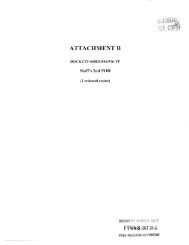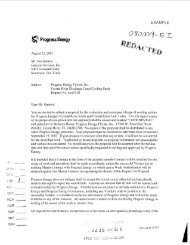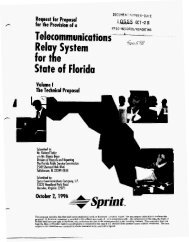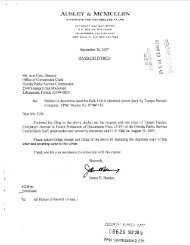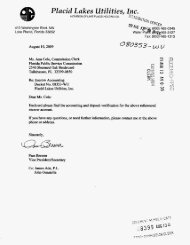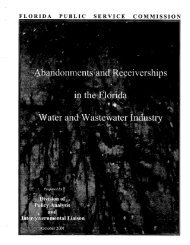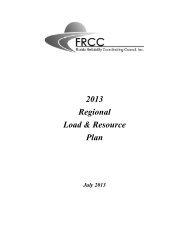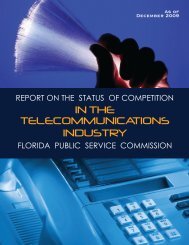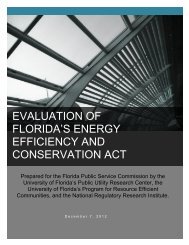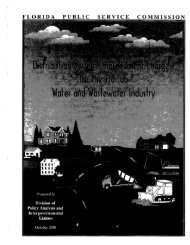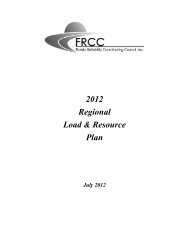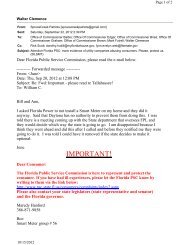Review of 2008 Ten-Year Site Plans - Public Service Commission
Review of 2008 Ten-Year Site Plans - Public Service Commission
Review of 2008 Ten-Year Site Plans - Public Service Commission
You also want an ePaper? Increase the reach of your titles
YUMPU automatically turns print PDFs into web optimized ePapers that Google loves.
4. ENERGY GENERATION<br />
Current projections indicate that the state’s total energy needs will surpass existing DSM and<br />
energy efficiency programs <strong>of</strong>fered by Florida’s utilities. Therefore, the addition <strong>of</strong> supply-side<br />
generation is necessary to satisfy reliability requirements. Florida’s electric utilities must consider<br />
several strategic and economic factors prior to selecting a supply-side resource. In recent years, the<br />
Legislature and the <strong>Commission</strong> have stressed the importance <strong>of</strong> utilities reducing the state’s<br />
dependence on natural gas, which generated nearly 40 percent <strong>of</strong> the state’s energy in 2007, and<br />
maintaining a balanced fuel supply. A balanced fuel supply adds value in terms <strong>of</strong> supply reliability<br />
and price stability.<br />
Florida’s utilities must additionally address growing environmental concerns. Discussions<br />
regarding emission requirements for substances such as carbon dioxide are underway at both the state<br />
and national level. Potential incremental environmental costs, therefore, must also be considered as<br />
utilities explore supply side resources. Such costs are particularly critical when considering fossil<br />
fuel-fired generation.<br />
Renewable Generation<br />
Despite providing a small percentage <strong>of</strong> the utilities’ total energy supply, renewable<br />
generation serves as a key component to Florida’s energy future with regard to reducing reliance on<br />
fossil fuels and improving environmental conditions. In Florida, renewable energy is primarily fueled<br />
by municipal solid waste, biomass, and waste heat energy sources.<br />
Hydroelectric generation also provides renewable energy generation in Florida. Hydroelectric<br />
units at two sites, one utility-owned and one operated by the Federal government, supply 54 MW <strong>of</strong><br />
renewable capacity. Because <strong>of</strong> Florida’s geography, however, new hydroelectric power<br />
generation is not expected. Currently, renewable energy facilities provide more than 1,000 MW <strong>of</strong><br />
firm and non-firm capacity. Table 5 below summarizes Florida’s existing renewable resources.<br />
Table 5. Existing Renewable Resources<br />
Fuel Type Capacity (MW)<br />
Biomass 270<br />
Hydro 54<br />
Landfill Gas 16<br />
Municipal Solid Waste 428<br />
Solar 0<br />
Wind 0<br />
Waste Heat 329<br />
Total 1,097<br />
<strong>Review</strong> <strong>of</strong> <strong>2008</strong> <strong>Ten</strong>-<strong>Year</strong> <strong>Site</strong> <strong>Plans</strong> - 16 -



